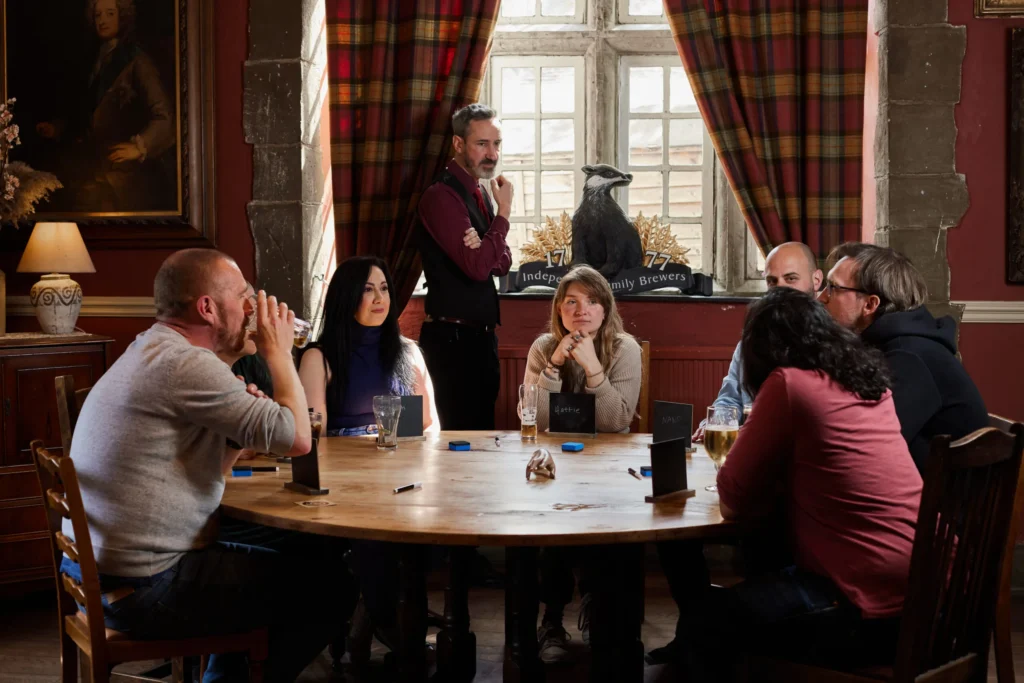Perhaps you’re considering making your team party in a million plastic balls, feel they are badly in need of donkey therapy, or have decided you’d rather they were abandoned on a remote island.
What have your reports done to deserve this?
It’s a tediously overused question, but for a good reason; you’ll benefit from pausing to consider what problem your teambuilding is solving. What follows is some brief guidance around identifying that need. Once you feel you’ve zeroed in on the motivations for teambuilding, you will find yourself in a much stronger position to choose from the many weird and wonderful offerings out there.

Sometimes it’s needed; sometimes it’s just overdue.
One of the most obvious problems you may be addressing is the fact that it’s been a while since the last teambuilding day. You have to teambuild, right? You may even have a mandate to do one every quarter/summer/month. Even if this is the case, and you’re just looking to tick the teambuilding box, it is worth spending some time thinking how they might work better together.
Alternatively, you might have identified an issue in the team. Perhaps meetings are feeling waffly, there’s a misalignment around objectives or you’re noticing that your 121 conversations are taking a depressive turn. You should consider if this is an individual problem, or a systemic one. Can the bulk of this problem be attributed to one person in the team, or do you feel it’s cultural?
The nature of our brains is such that most of our narratives are likely to be knee-jerk reactions to immediate events, rather than a holistic picture. This is due to a horrible little shortcut in our minds called the peak-end rule. Perhaps we had an unpleasant and public confrontation with a report in a meeting; in our panic to avoid a repeat, we decide to approach this individual problem as a systemic one. Don’t do this. Address individual problems individually. Address systemic problems systemically.
Culture change needs to happen both ways
Assuming you’ve weeded out individual issues, you’ll now be left with the systemic issues. Before you address this within the group, you’ll need to simultaneously consider the company’s part in this problem. Culture can and does flow both ways: bottom up and top down. As a result you should consider how the company’s messaging and direction, or how your own communication has contributed. If it’s the former, that’s feedback for you to pass upward. If the latter, that’s your own development. Whichever way, attempting to solve cultural crises in the team without introspecting back up the chain is like throwing paper into the wind.

What problems can a team face?
After the above sense checking, you will likely identify one or more of the following needs for the team you’re looking to build. The following is both an expansion and contraction of the work done by Patrick Lencioni. The problems you’re likely to see are that they don’t know each other, they don’t listen to each other, they don’t confront each other or they struggle to commit.
So, let’s take a quick look at each in turn:
They don’t know each other well enough, or are siloed
This is an inevitable issue on teams that are new or have undergone significant change. They don’t have shared memories or they haven’t got to spend time with one another socially. Alternatively, they might be separated by being in different departments or projects, and while you know they need to work well together, they lack the personal connections to make this happen.
What do we need? This team needs time together with a loose structure, and time in which they will get to relax and talk. If you can give them a shared activity to eye roll at, even better. They’ll bond.
They don’t listen to one another and/or talk in circles
Perhaps your team knows each other well, but you find that when they get together there tends to be a lot of monologuing, or spiralling debate and not enough concise talk that leads to action. This is almost certainly due to a lack of trust. Likely what they are doing is status management – each attempting to assert themselves in the group, or fearfully avoid attention. Consequently, this group needs safety.
What do we need? Put them in situations where they will have to be there for each other in the here and now. You can generally trust people, and activities that demonstrate this will help settle the nerves and stave off the status management.
They don’t confidently confront each other
Teams can be fun, friendly, welcoming and warm. But if they don’t know how to confront one another, they’re not getting far. People will always clash in their opinions and if they don’t externalize their views, you can be sure they will internalize them. The ways in which internalised views can affect teams are manifold, and you won’t like any of them; here’s one – they quit.
What do we need? An activity that imposes division and thereby calls for negotiation. They need to learn to raise concerns with one another and trust that having a difference of opinion is unlikely to harm the relationship.
They find it hard to turn decisions into action
Even if teams can do all of the above, a team might still struggle to deliver. This might be down to a lack of ownership – your team might be willing and able to let tasks fall between the cracks. Or it might be on account of their lack of commitment to tasks. For whatever reason they are more incentivized to remain inactive than get stuff done.
What do we need?This team needs to take part in activities that have a short turnaround between input and output. They will benefit from situations where they get to fail fast. Furthermore, competition can be a powerful way to demonstrate the impact that commitment and ownership can have.
Now all you have to do is choose…
Once you’ve identified your team’s needs, you’ll be better placed to decide between paintball or parkour, cooking or cocktail making. GetQuesting looks to address each of these needs through the medium of games. You want people to get chatting? Do a Murder Mystery. You want trust? Roleplay together. You want to normalise confrontation? Play Traitors. Need to face failure? Host a megagame.

Correctly diagnosing what is not working in your team can have a powerful impact across the board. Choosing what to do in the evenings on the offsite is likely to be a small part of a larger tapestry of change. Whatever your need, here’s hoping the above will give you pause and wisdom to pick the right activity for your team.
Happy goat therapy.
References
Kahneman, D. (2011). Thinking, fast and slow. New York, NY: Farrar, Straus and Giroux.
Lencioni, P. (2002). The five dysfunctions of a team: A leadership fable. San Francisco, CA: Jossey-Bass.
Coyle, D. (2018). The culture code: The secrets of highly successful groups. New York, NY: Bantam Books.